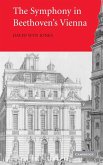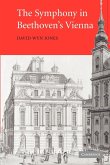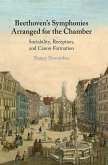Beethoven's concertos for piano and for violin rank among the most famous and beloved works in the concert literature. The composer regarded the piano concertos, which he himself premiered, as very personal vehicles for conveying his musical thought and performance style. In this pathbreaking book, Leon Plantinga brings to bear his years of scholarship in Romantic-era music, establishing the circumstances surrounding the composition and first performances of all of Beethoven's concertos. He locates the works in their social and musical context, and discusses their form, style, and affect, highlighting their expressive individuality. Finally, Plantinga looks at the vexing questions about performing this repertoire today.
In his concertos Beethoven joined in a sort of human expression that seems almost universal: a discourse of the individual and the group, or of leader and followers who sometimes work together in harmony and sometimes appear pitted one against the other (early definitions of the concerto, indeed, were divided as to which was the main idea of the genre-cooperation or conflict). In his concertos Beethoven typically cast himself as leader; the concerto was for him mainly a youthful preoccupation intimately bound up with his prowess and ambition as a public pianist. The hope is that a wide-ranging consideration of the historical context will serve to cast new light upon the music itself, which remains the central focus of this study.
Hinweis: Dieser Artikel kann nur an eine deutsche Lieferadresse ausgeliefert werden.
In his concertos Beethoven joined in a sort of human expression that seems almost universal: a discourse of the individual and the group, or of leader and followers who sometimes work together in harmony and sometimes appear pitted one against the other (early definitions of the concerto, indeed, were divided as to which was the main idea of the genre-cooperation or conflict). In his concertos Beethoven typically cast himself as leader; the concerto was for him mainly a youthful preoccupation intimately bound up with his prowess and ambition as a public pianist. The hope is that a wide-ranging consideration of the historical context will serve to cast new light upon the music itself, which remains the central focus of this study.
Hinweis: Dieser Artikel kann nur an eine deutsche Lieferadresse ausgeliefert werden.








